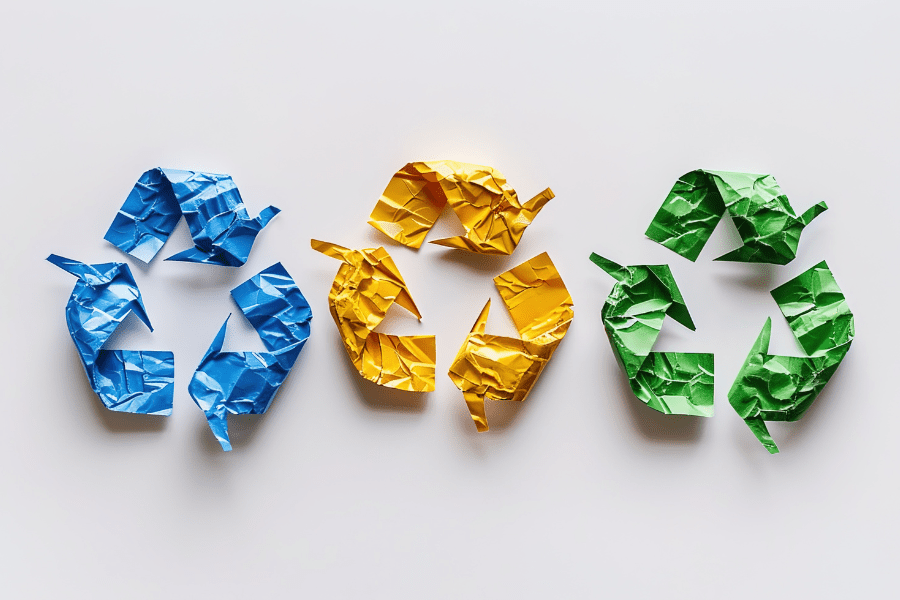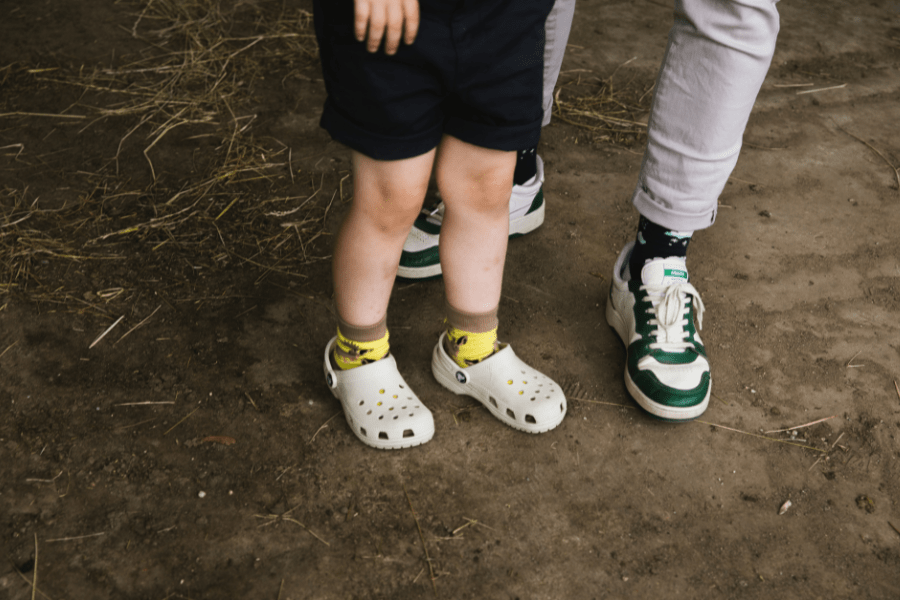
What's the difference between recyclable and recycled?
With the current state of the climate, an increasing number of people are trying to improve their habits and become more sustainable with what they eat, wear, drive, and do! One relatively simple way of being more environmentally friendly is through the art of recycling. This is something we feel really strongly about here at Hedgy.
However, the word “recycle” gets thrown around quite a lot, especially in the fashion industry, with statements such as ‘fully recyclable packaging’ and ‘recycled clothing’. But what do these words really mean, and is there a difference between recyclable and recycled?
In this article, we will explore the definitions of these two terms, recyclable and recycled, to help you understand whether there is a difference between recycled clothing and recyclable clothing, and what to look out for when browsing the rails to shop sustainably. Let’s get into it!
What does recyclable mean?
Recyclable refers to the potential for reuse. If a product is made out of recyclable materials, it can be reintroduced into the manufacturing process to create new products without the need for new natural resources. Every year, over 100 billion items of clothing are produced globally, many of which are made from virgin resources, so by recycling existing clothing into new clothing items, the stress of finite natural resources is reduced!
Recycling helps reduce waste, conserve resources, and minimise the environmental impact of production. Proper recycling practices ensure that these materials are collected, processed, and transformed into new items in a sustainable way.
Common recyclable materials that are often used in clothing include natural fibres like cotton, which can be broken down and repurposed into new textile products, and synthetic fibres such as polyester, which can be melted down and re-spun into new fibres. Other recyclable materials in clothing are wool, nylon, and certain types of spandex blends.
The recycling process begins with the collection of recyclable materials, which are then sorted by type. Once sorted, these materials are processed, cleaned and broken down into their raw forms. These raw materials are then used to manufacture new products, completing the cycle.
Although recycling materials such as cotton and polyester is much better for the environment, it doesn’t come without its challenges. Mixed materials, for example, can be difficult to separate and recycle effectively, and the contamination of recyclable materials with non-recyclable components can lead to increased costs and reduced efficiency.
What does recycled mean?
In the clothing industry, the term ‘recycled’ means that the materials used to make the item of clothing originally started out as something else have been collected and remanufactured into new products.
Recycled materials are a much more sustainable option than new materials because they reduce the amount of new material being manufactured, which reduces the amount of energy used to create the item of clothing. In addition, recycling materials into new items of clothing delays the material’s ending up in landfills.
73% of the materials used to produce clothing get thrown in landfills or burned at the end of their lives, and less than 1% of old clothing goes on to be used to make new clothing. This staggering statistic shows the importance of understanding where our clothes come from, and ensuring they are reused or recycled appropriately!
Despite the small number of clothes and materials that are recycled every year, two common types of recycled materials are used in the fashion industry:
- Reclaimed cotton: Reclaimed cotton can be made from textile waste generated in the manufacturing process, such as cutting scraps or post-consumer garments. The material scraps are reprocessed to create new yarns and can sometimes be blended with virgin cotton to maintain the quality and strength of the material.
- Recycled polyester: Recycled polyester can be made from old polyester clothing items or discarded plastic bottles that have been cleaned, shredded, melted and spun into new fibres. It is often used in outdoor gear, activewear, and fashion items.
Just like with recyclable materials, using pre-recycled materials in the fashion industry can come with its challenges. For example, recycled fibres can be weaker or lower quality than new fibres, reducing the durability of the final product. In addition, due to a lack of knowledge, recycled materials are often limited in availability.
What are the key differences between recyclable and recycled?
As we’ve discussed, the primary distinction between recyclable and recycled materials is based on their stage within the recycling process. Recyclable materials have the potential to be processed and reused. They can be collected, sorted, and then transformed into new products, but they have not yet undergone this process. On the other hand, recycled materials have already been collected, processed, and remanufactured into something new.
Consumers often perceive recyclable materials as environmentally friendly options because they can be repurposed in the future. However, recycled materials might be prioritised by those who value the immediate impact of reducing waste and conserving resources. Recycled products can also appeal to consumers who are conscious of supporting a circular economy, where materials are continuously reused rather than discarded.
How is the clothing industry using recyclable and recycled materials?
Many high street and designer brands are trying to incorporate more and more recyclable and recycled materials into their products. Manufacturers are now prioritising the use of recycled materials such as plastic, polyester and reclaimed cotton and are starting to implement recyclable materials like bamboo into their clothing items, not only reducing the environmental impact of the manufacturing process but appealing to eco-conscious consumers in the process.
For example, Adidas has introduced a line of trainers made from recycled ocean plastic. And, of course, here at Hedgy, we have shown that bamboo clothing can be sustainable, comfortable and fashionable!
How can consumers make informed choices?
For those who are conscious and want to make sustainable choices, there are a few simple steps that consumers can follow. For example, read the labels of clothing before you buy it and look for terms such as “recycled” or “reclaimed.” These words can help identify clothes made from recycled materials. Labels that state things like “100% recyclable” show that the product can be recycled easily at the end of its life.
The other way to support sustainability in the fashion industry is to responsibly dispose of your clothing when you no longer want it. Donating wearable items to charity, recycling textiles that might not be good enough to be worn but can be made into something else, or using brands’ ‘take back’ schemes can help ensure that recyclable materials are properly processed so they can be made into new things.
How Hedgy can help
At Hedgy, we are passionate about sustainability. Our tagline, ‘comfort for the people, kindness for the planet’, is more than just a slogan; it’s a value we strive to live by in all aspects of the business.
Our clothing is sustainably sourced and made from recyclable materials, such as bamboo or recycled fabrics like reclaimed cotton, and is free from harmful chemicals. We also proudly support local environmental causes, ensuring that when you purchase from Hedgy, you aren’t just buying a cool, comfy pair of socks, but you’re also making a positive impact on the world we live in!
Browse our products today and join us on the path towards a more sustainable future!

